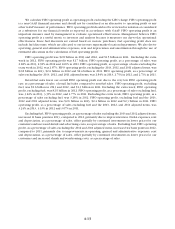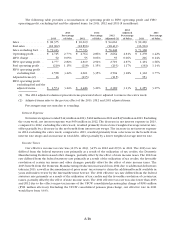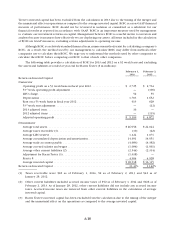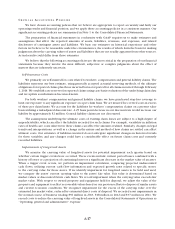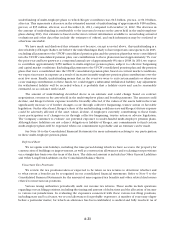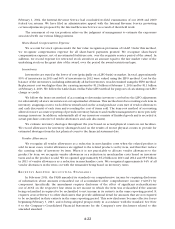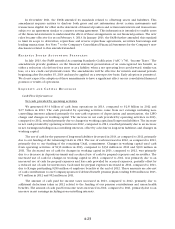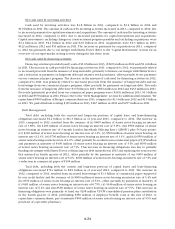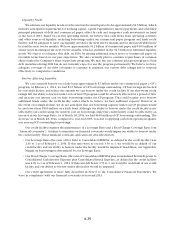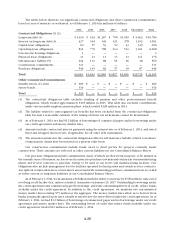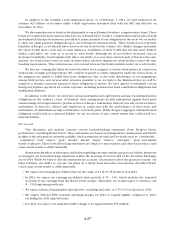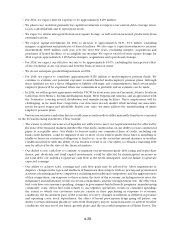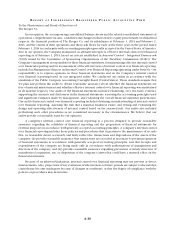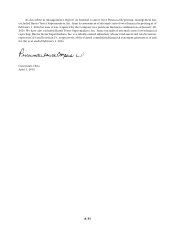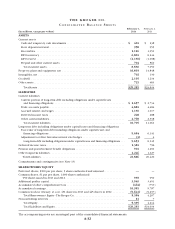Kroger 2013 Annual Report Download - page 95
Download and view the complete annual report
Please find page 95 of the 2013 Kroger annual report below. You can navigate through the pages in the report by either clicking on the pages listed below, or by using the keyword search tool below to find specific information within the annual report.A-22
February 1, 2014, the Internal Revenue Service had concluded its field examination of our 2008 and 2009
federal tax returns. We have filed an administrative appeal with the Internal Revenue Service protesting
certain adjustments proposed by the Internal Revenue Service as a result of their field work.
The assessment of our tax position relies on the judgment of management to estimate the exposures
associated with our various filing positions.
Share-Based Compensation Expense
We account for stock options under the fair value recognition provisions of GAAP. Under this method,
we recognize compensation expense for all share-based payments granted. We recognize share-based
compensation expense, net of an estimated forfeiture rate, over the requisite service period of the award. In
addition, we record expense for restricted stock awards in an amount equal to the fair market value of the
underlying stock on the grant date of the award, over the period the award restrictions lapse.
Inventories
Inventories are stated at the lower of cost (principally on a LIFO basis) or market. In total, approximately
95% of inventories in 2013 and 96% of inventories in 2012 were valued using the LIFO method. Cost for the
balance of the inventories, including substantially all fuel inventories, was determined using the FIFO method.
Replacement cost was higher than the carrying amount by $1.2 billion at February 1, 2014 and by $1.1 billion
at February 2, 2013. We follow the Link-Chain, Dollar-Value LIFO method for purposes of calculating our LIFO
charge or credit.
We follow the item-cost method of accounting to determine inventory cost before the LIFO adjustment
for substantially all store inventories at our supermarket divisions. This method involves counting each item in
inventory, assigning costs to each of these items based on the actual purchase costs (net of vendor allowances
and cash discounts) of each item and recording the cost of items sold. The item-cost method of accounting
allows for more accurate reporting of periodic inventory balances and enables management to more precisely
manage inventory. In addition, substantially all of our inventory consists of finished goods and is recorded at
actual purchase costs (net of vendor allowances and cash discounts).
We evaluate inventory shortages throughout the year based on actual physical counts in our facilities.
We record allowances for inventory shortages based on the results of recent physical counts to provide for
estimated shortages from the last physical count to the financial statement date.
Vendor Allowances
We recognize all vendor allowances as a reduction in merchandise costs when the related product is
sold. In most cases, vendor allowances are applied to the related product cost by item, and therefore reduce
the carrying value of inventory by item. When it is not practicable to allocate vendor allowances to the
product by item, we recognize vendor allowances as a reduction in merchandise costs based on inventory
turns and as the product is sold. We recognized approximately $6.2 billion in 2013 and 2012 and $5.9 billion
in 2011 of vendor allowances as a reduction in merchandise costs. We recognized approximately 94% of all
vendor allowances in the item cost with the remainder being based on inventory turns.
RE C E N T L Y A D O P T E D A C C O U N T I N G S T A N D A R D S
In February 2013, the FASB amended its standards on comprehensive income by requiring disclosure
of information about amounts reclassified out of accumulated other comprehensive income (“AOCI”) by
component. Specifically, the amendment requires disclosure of the effect of significant reclassifications
out of AOCI on the respective line items in net income in which the item was reclassified if the amount
being reclassified is required to be reclassified to net income in its entirety in the same reporting period. It
requires cross reference to other disclosures that provide additional detail for amounts that are not required
to be reclassified in their entirety in the same reporting period. This new disclosure became effective for us
beginning February 3, 2013, and is being adopted prospectively in accordance with the standard. See Note
9 to the Company’s Consolidated Financial Statements for the Company’s new disclosures related to this
amended standard.



